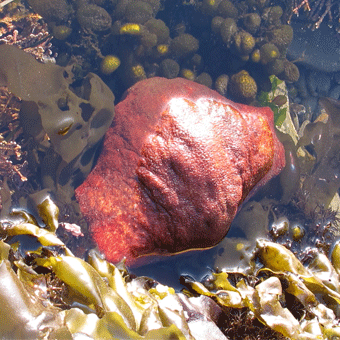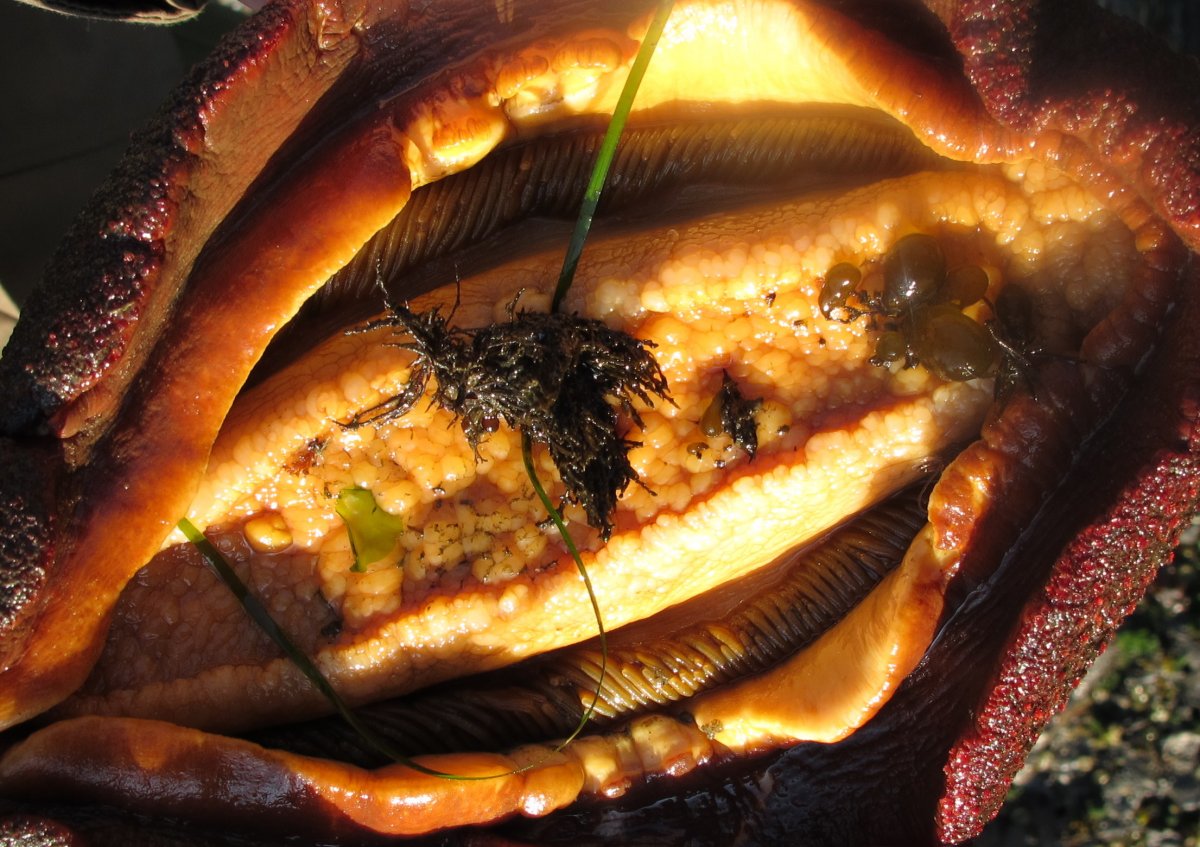
These slow-moving giants don’t look real.
Not speedy, not strong, not agile—gumboot chitons are just plain big and tough.
Like all chitons, gumboots are armored by eight plates over the back. But the plates of gumboot chitons are completely covered by the thick, skin-like girdle. Only a few predators, notably seastars and octopus, can make it through the tough skin: as long as it stays out of the sun, avoids the roughest surf, and keeps its less-armored side down, a gumboot might live for a couple of decades.
Less adept at hanging on than other chitons are, gumboot chitons are usually seen only in the lower intertidal areas, hiding in protected spots by day and grazing the algae off the rocks at night.
As tough as they are in their home, gumboot chitons won’t survive being taken away from their habitat: Please enjoy observing them where you find them.
Orange and yellow beneath, a deep slit all around the bottom separate the foot (in the center) from the outside edge; the gills of the chiton can be seen deep inside the slit.
About a quarter of all gumboot chitons are home to a kind of segmented worm that lives in the space with the gills, cleaning the gills and feeding on organic material.

